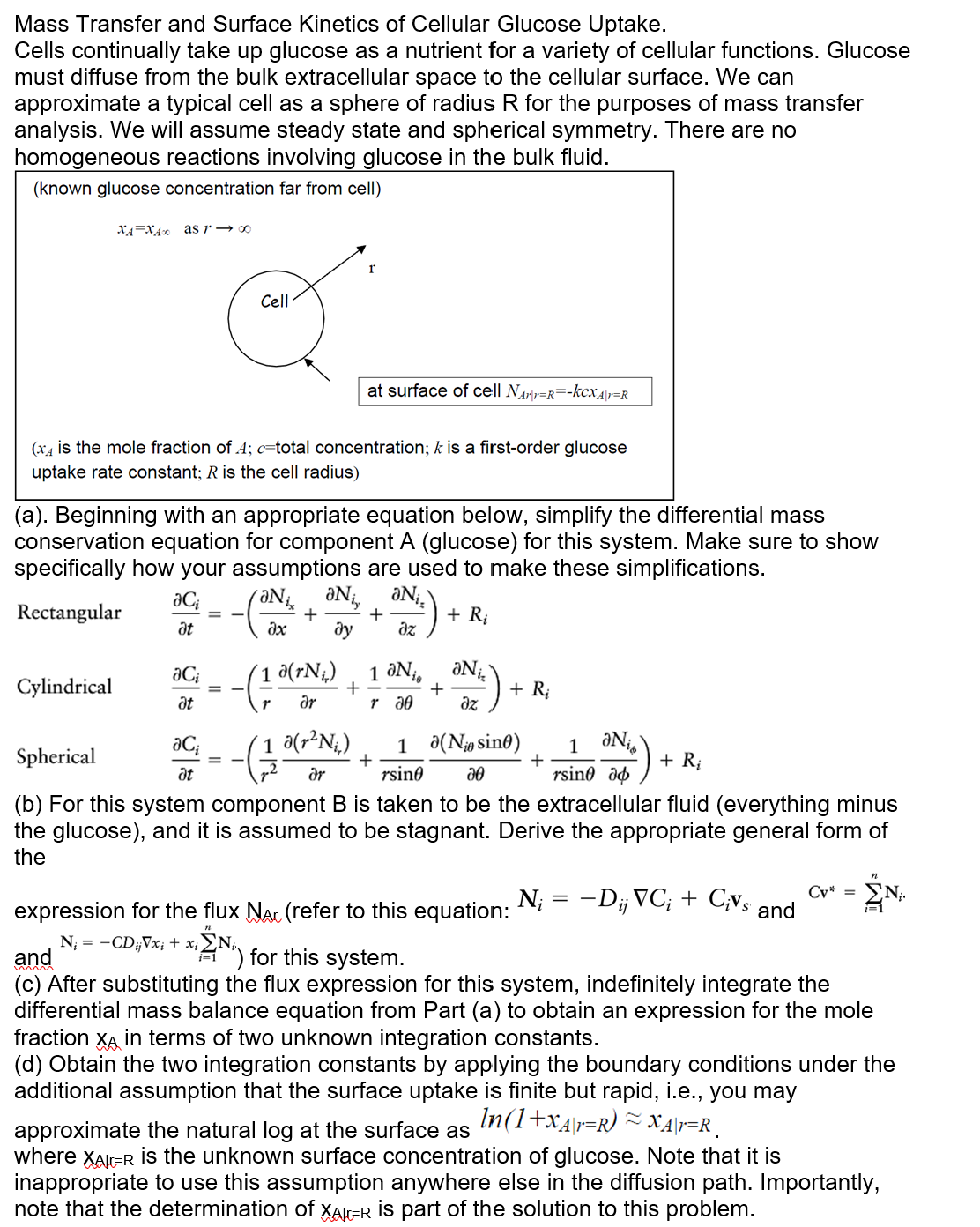Answered step by step
Verified Expert Solution
Question
1 Approved Answer
Mass Transfer and Surface Kinetics of Cellular Glucose Uptake. Cells continually take up glucose as a nutrient for a variety of cellular functions. Glucose must
Mass Transfer and Surface Kinetics of Cellular Glucose Uptake.
Cells continually take up glucose as a nutrient for a variety of cellular functions. Glucose
must diffuse from the bulk extracellular space to the cellular surface. We can
approximate a typical cell as a sphere of radius for the purposes of mass transfer
analysis. We will assume steady state and spherical symmetry. There are no
homogeneous reactions involving glucose in the bulk fluid.
known glucose concentration far from cell
as
at surface of cell
is the mole fraction of ; total concentration; is a firstorder glucose
uptake rate constant; is the cell radius
a Beginning with an appropriate equation below, simplify the differential mass
conservation equation for component A glucose for this system. Make sure to show
specifically how your assumptions are used to make these simplifications.
Rectangular
Cylindrical
Spherical
b For this system component is taken to be the extracellular fluid everything minus
the glucose and it is assumed to be stagnant. Derive the appropriate general form of
the
expression for the flux refer to this equation:
and
and
: for this system.
c After substituting the flux expression for this system, indefinitely integrate the
differential mass balance equation from Part a to obtain an expression for the mole
fraction in terms of two unknown integration constants.
d Obtain the two integration constants by applying the boundary conditions under the
additional assumption that the surface uptake is finite but rapid, ie you may
approximate the natural log at the surface as ~~
where is the unknown surface concentration of glucose. Note that it is
inappropriate to use this assumption anywhere else in the diffusion path. Importantly,
note that the determination of is part of the solution to this problem.

Step by Step Solution
There are 3 Steps involved in it
Step: 1

Get Instant Access to Expert-Tailored Solutions
See step-by-step solutions with expert insights and AI powered tools for academic success
Step: 2

Step: 3

Ace Your Homework with AI
Get the answers you need in no time with our AI-driven, step-by-step assistance
Get Started


